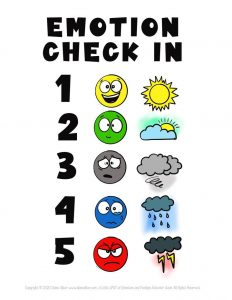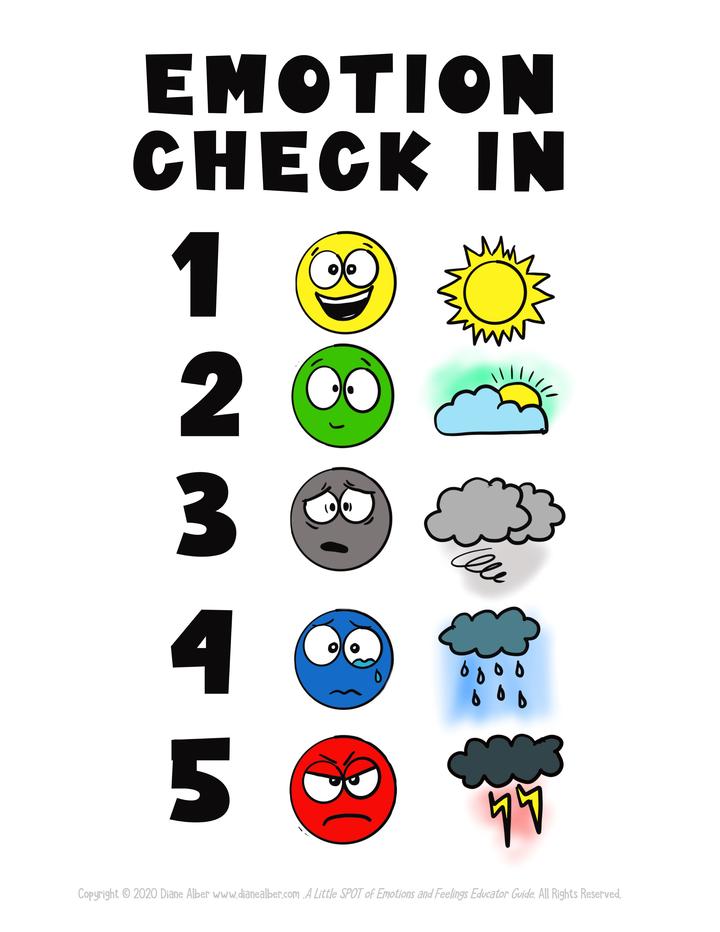Student Contributor: C. Klingler
 The emotion identification chart is a chart that can either be hung in the classroom for students to see and refer back to or it can be individualized and put on the student’s desk. It is helpful because it helps students learn how to identify and then in turn regulate their emotions and have appropriate responses to situations. Once a student is able to identify the emotion that they are feeling they can then use tools and strategies to help regulate that emotion in an appropriate way within the classroom and outside the classroom as well.
The emotion identification chart is a chart that can either be hung in the classroom for students to see and refer back to or it can be individualized and put on the student’s desk. It is helpful because it helps students learn how to identify and then in turn regulate their emotions and have appropriate responses to situations. Once a student is able to identify the emotion that they are feeling they can then use tools and strategies to help regulate that emotion in an appropriate way within the classroom and outside the classroom as well.
An emotion identification chart can be used in different ways, it can be used as a whole class tool or just an individual student tool for their desk. The class-wide chart is helpful because all students can see it and use it to identify their emotions individually but also allows it to be a reference for the teacher to teach to what certain emotions are called and appropriate ways to regulate them. The individual emotion identification chart on a student’s desk is helpful because it is available for the student who needs it as well as it doesn’t display the student’s information to the whole class but is rather more private. It is a great way to help the student hold themselves more accountable. An important element to this tool is communication with the student on what emotions are, validating student emotions, and identifying certain emotions, as well as equipping students with tools to learn how to manage their own emotions. This helps students who have issues regulating their own emotions which results in outbursts of anger, sadness, etc.
 This relates to the supportive phase of management because the supportive phase of management is focused on what tools are available to support students in their learning as well as their social-emotional needs so that they have a well-rounded learning experience. The emotion identification chart is supportive because it is focused on teaching students to be responsible for their emotions and the tools to do so. This tool is also supportive because it is focused on putting in the right steps to encourage positive behavior and result in less need for corrective interventions. This tool could also fall under the preventative phase once students have learned some tools and strategies to manage their emotions because it then is acting as a way to prevent outbursts because the identification and management are available to the student. The emotion identification chart relates to the collaborative theory of influence because in the collaborative theory of influence it is a joint effort to create respectful relationships with an academic focus that teach students coping skills and natural and logical consequences. The emotion identification chart fits into collaborative because it is teaching students coping skills to deal with their emotions that helps create a focus on academics because the focus no longer needs to be on the outbursts or misbehavior that stems from their lack of control of their emotions and lack of regulation of their emotions.
This relates to the supportive phase of management because the supportive phase of management is focused on what tools are available to support students in their learning as well as their social-emotional needs so that they have a well-rounded learning experience. The emotion identification chart is supportive because it is focused on teaching students to be responsible for their emotions and the tools to do so. This tool is also supportive because it is focused on putting in the right steps to encourage positive behavior and result in less need for corrective interventions. This tool could also fall under the preventative phase once students have learned some tools and strategies to manage their emotions because it then is acting as a way to prevent outbursts because the identification and management are available to the student. The emotion identification chart relates to the collaborative theory of influence because in the collaborative theory of influence it is a joint effort to create respectful relationships with an academic focus that teach students coping skills and natural and logical consequences. The emotion identification chart fits into collaborative because it is teaching students coping skills to deal with their emotions that helps create a focus on academics because the focus no longer needs to be on the outbursts or misbehavior that stems from their lack of control of their emotions and lack of regulation of their emotions.
More Information –
Tool Source: Teacher at Liberty Creek Elementary


